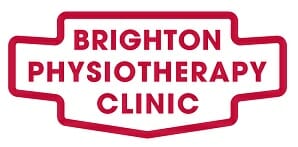Physiotherapy in Brighton
Hove Physiotherapist
Looking for a good physiotherapy clinic in Hove? We have trained physiotherapists who specialise in relieving shoulder pain, neck pain, back pain, migraines, and sports injuries. Our physiotherapists are skilled in various techniques such as deep tissue massage, friction massage, soft tissue manipulation, joint manipulation, and spinal manipulation.
We do our best to understand the underlying cause of pain. We treat the affected muscle, helping you regain control of the area of the body in no time. Our wholesome physiotherapistic therapy model also allows us to provide relief to the entire muscles of the body.
What Is Physiotherapy?
Physiotherapy is the treatment of injuries and musculoskeletal disorders using mechanical movements, manual therapy, and exercise therapy. The treatment is geared at improving musculoskeletal functions, repairing damages, and relieving pain. Physiotherapy requires expert knowledge in body features, functions, and how to manipulate them.

Conditions That Can Be Treated with Physiotherapy
Physiotherapy is very useful in treating most musculoskeletal conditions. Severe cases of these conditions sometimes require surgery for symptoms to improve. Here are some of the conditions that can be treated with physiotherapy.
Sports Injuries
Athletes go over and over the same set of movements during games. Such repetitive motions, especially in sports such as golf, tennis, and baseball, put constant stress on the related body structures. That’s why athletes are more vulnerable to injury. They may focus too much on a specific anatomical part and struggle with or ignore a particular phase of their movement. This exposes a specific anatomical structure to injury.
Sports physiotherapists help rehabilitate athletes as they reach their limits from the injuries and pressures they face. Our specialists have sport-specific knowledge needed to treat acute, chronic and severe injuries.
After operation rehabilitation
You have had your surgery and your mind is telling you that it is time to go back to your daily routines. But your body says, “Not so soon.” The reality is, you’ll likely need some therapy to recover your strength before you can get back to business as usual.
You can discover the best and safest way to walk, bathe, get ready, and take care of yourself with the aid of a physical therapist and other professionals. And you’re going to get exercises to strengthen your muscles and help you improve the way you move the part of your body where you’ve had your surgery.
Nerve pain (radiculopathy)
Radiculopathy, also known as a pinched nerve, is a condition arising from nerve irritation in the back. This happens when it damages the disk that protects the spine and affects the surrounding nerve roots. This results in pain and neuropathy, or improper nerve functioning.
Tendinopathies
Tendinopathy is a failure of the tendon’s healing response with haphazard tenocyte proliferation, tenocyte intracellular defects, collagen fibre destruction, and resulting increase in noncollagen matrix. The term tendinopathy is a generalised description of the medical problems associated with overuse in and around the tendons (both pain and pathological characteristics).
Running injuries
The term tendinopathy is a generalised description of the medical problems associated with overuse in and around the tendons (both pain and pathological characteristics).
Tennis/ Golfers Elbow
Tennis elbow is a musculoskeletal disorder affecting the lateral epicondyle of the outer part of the elbow. Tennis elbow is Sometimes known as lateral tendinopathy of the elbow and lateral epicondylitis. It was originally known in 1882 as the lawn tennis elbow after being listed as a medical condition.
Often known as medial epicondylitis, golfer’s elbow affects someone doing an activity that strains the forearm or wrist. In some ways, golfer’s elbow is similar to tennis elbow.
Physiotherapy Care
There are certain times in our lives when we need physiotherapy care. Physiotherapy care may help to improve the quality of life at these points. Here are some types of physiotherapy care.
Geriatric Physiotherapy Care
Geriatric physiotherapy care covers all forms of therapy treatment to improve quality of life for the elderly. As individuals grow older, the musculoskeletal system becomes weaker, which creates susceptibility to most musculoskeletal disorders. Such conditions as cauda equina syndrome, carpal tunnel syndrome, back pain, and arthritis require proper care.
Geriatric care helps the elderly to use the fewer healthy muscles in such a way as to make up for weaker ones. This reduces the risk of developing musculoskeletal conditions or injuries.
Paediatric Physiotherapy Care
Babies and children have weak and developing musculoskeletal system. This means they are at high risk of developing injuries or postural problems. When left without proper care, the musculoskeletal system can adjust improperly to accommodate the bad posture. This affects the child at a later age and may cause pain.
Paediatric physiotherapy care ensures the proper development of the musculoskeletal system for children and adolescents. Expert physiotherapists can also help children improve their body functions.
Physiotherapy Care for the Pregnant
Pregnancy increases body weight and the risk of developing musculoskeletal disorders. Back pain is the most common condition experienced by pregnant women. The chance of developing back pain increases with an increase in weight and less physical activity. Knee and ankle pain are other conditions experienced during pregnancy.
Physiotherapy is used to relieve back pain and also correct other postural problems associated with pregnancy. Proper physiotherapy care and home exercises also enhance smooth delivery.
Physiotherapy Care for Work-related Disorders
Work-related musculoskeletal disorders are the number one cause of absence from work in the UK. This is very rampant in occupations requiring a great deal of physical activity. These disorders reduce productivity at the workplace and can cause significant harm if not dealt with.
You can take care of the health of your workers and also safeguard your business by providing regular physiotherapy care for your employees. Regular checks, exercise therapy, and physiotherapisty help to keep them stronger and ready for work always.
Physiotherapistic Techniques
There are certain techniques used by physiotherapists and physiotherapists to provide better relief from pain and release from muscle tension. These revolve around massage, manipulation, and mobilisation therapy. Some common techniques include.
Deep Tissue Massage
Deep tissue massage, unlike Swedish massage, is used to treat musculoskeletal issues. It involves applying firm pressure to reach the fascia and deeper layers of muscle. Deep tissue massage is used for cases of chronic aches, stiff neck, stiff back, leg muscle tightness, low back pain, sore shoulders, and migraines.
The massage therapy aids rehabilitation, improves postural problems, improves limited mobility functions, and also aids sports-related injuries. Deep tissue, for best results and safety purposes, is performed by expert physiotherapists.
Friction Massage
Friction massage is a form of massage therapy used in loosening tight muscle knots. They are performed on areas and joints where there are adhesions within tendons and muscles. It is very useful for the treatment of tendinopathy, ligament lesions, muscle strains, and scar healing.
Friction massage aims to influence cell behaviour of affected soft tissues. The therapy induces traumatic hyperemia, simulation of mechanoreceptors, and fibroblastic proliferation. Friction massage is best administered by expert physiotherapists as it is a complex process. It is also not advisable for individuals with skin conditions and rheumatoid arthritis.
Tissue Manipulation
Tissue manipulation is a holistic therapy that is directed at improving the overall wellbeing and function of body tissues such as ligaments, muscles, and nerves. It reduces inflammation, improves body fluid circulation, relieves pain, and releases tension in soft tissues.
Tissue manipulation techniques such as myofascial release and trigger point therapy are used to identify trigger points within the body’s musculoskeletal system. Pressing and rubbing on these points relaxes contracted muscles and stimulates stretch reflex. Tissue manipulation also involves some forms of massage therapy such as neuromuscular massage and cross-friction massage which are administered by expert physiotherapists.
Joint Manipulation
Joint manipulation is a form of manual therapy aimed at certain target synovial joints. The main aim of the therapy is to restore the use of the joint following injury or prolonged loss of motion. The therapy is administered alongside physiotherapy in order to speed up the healing process and also extend the limits of the joint.
Specific benefits of joint manipulation include an extended range of motion, relief from pain, and faster recovery time. While joint manipulation is much like massage, it is used as part of a broader therapy plan to restore holistic healing to the body.
Spinal Manipulation
Spinal manipulation is a technique used in relieving pain and treating injuries due to spinal deformities or misalignment. The technique has been in practice for ages and used to provide relief from back pain and neck pain. The process most times revolve around mechanical thrusts delivered at the cervical, thoracic, and lumbar spine.
Spinal adjustments and manipulation are useful in cases involving herniated disc, spinal stenosis, osteoporosis, and degenerative disc disease. The therapy can be administered by chiropractors and expert physiotherapists.
Best Physiotherapy Clinic in Hove
Physiotherapy is your best bet at relieving pain caused by acute musculoskeletal disorders. With physiotherapistic techniques, you can correct injuries and speed up the healing process. Injuries involving the spine may require expert chiropractic treatment alongside surgery to regain full body functions.
We have professionally trained and certified physiotherapists who can provide fast relief and better care. Our treatment model also involves physiotherapistic techniques that keep the entire body sound and less prone to injury. Reach out to us today for a consultation with our finest physiotherapists and physiotherapists.
